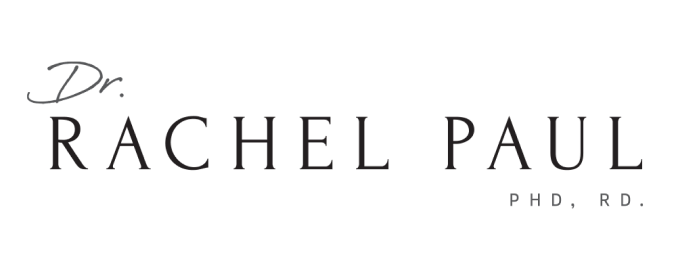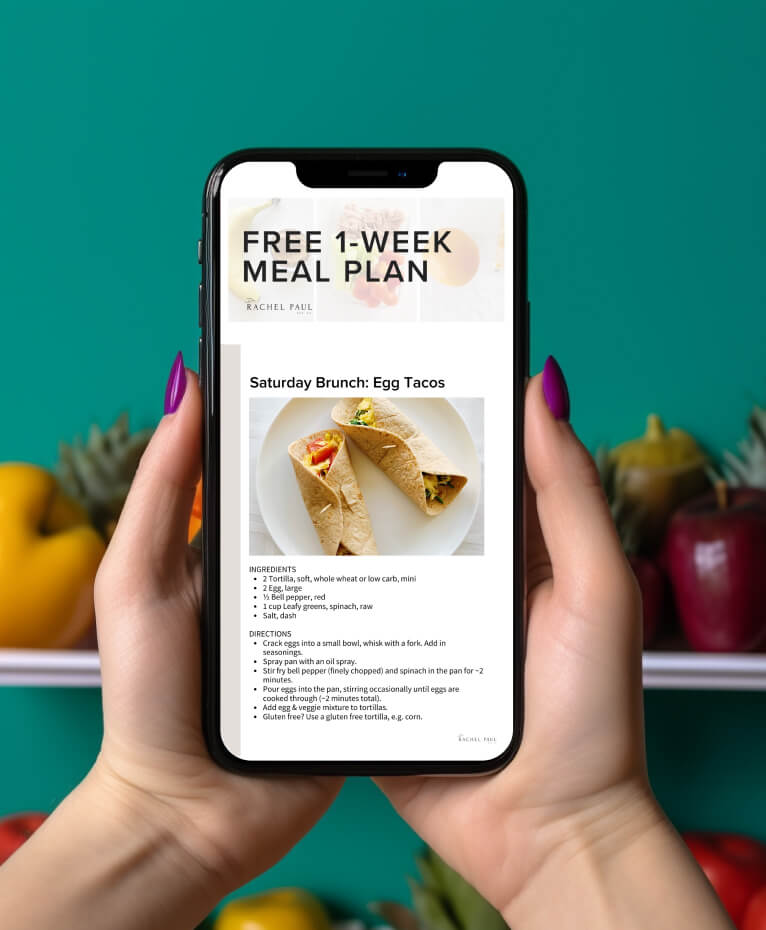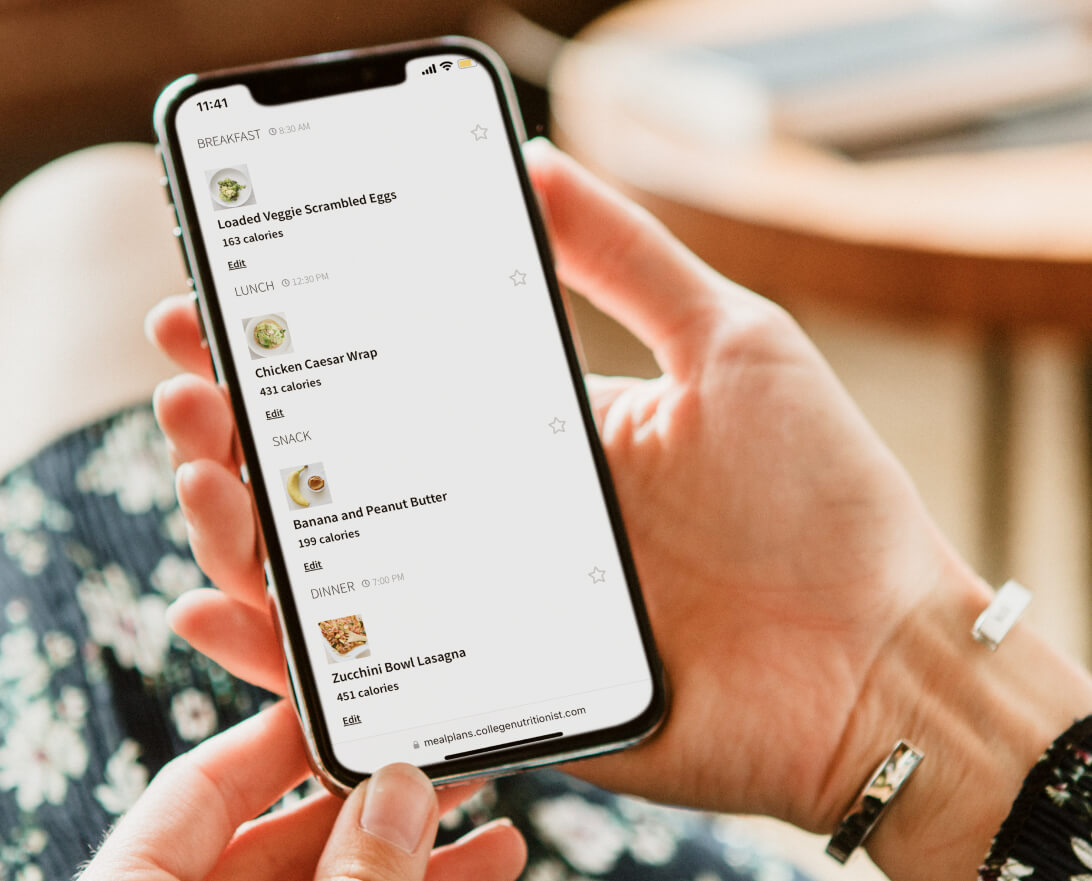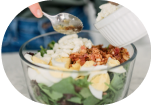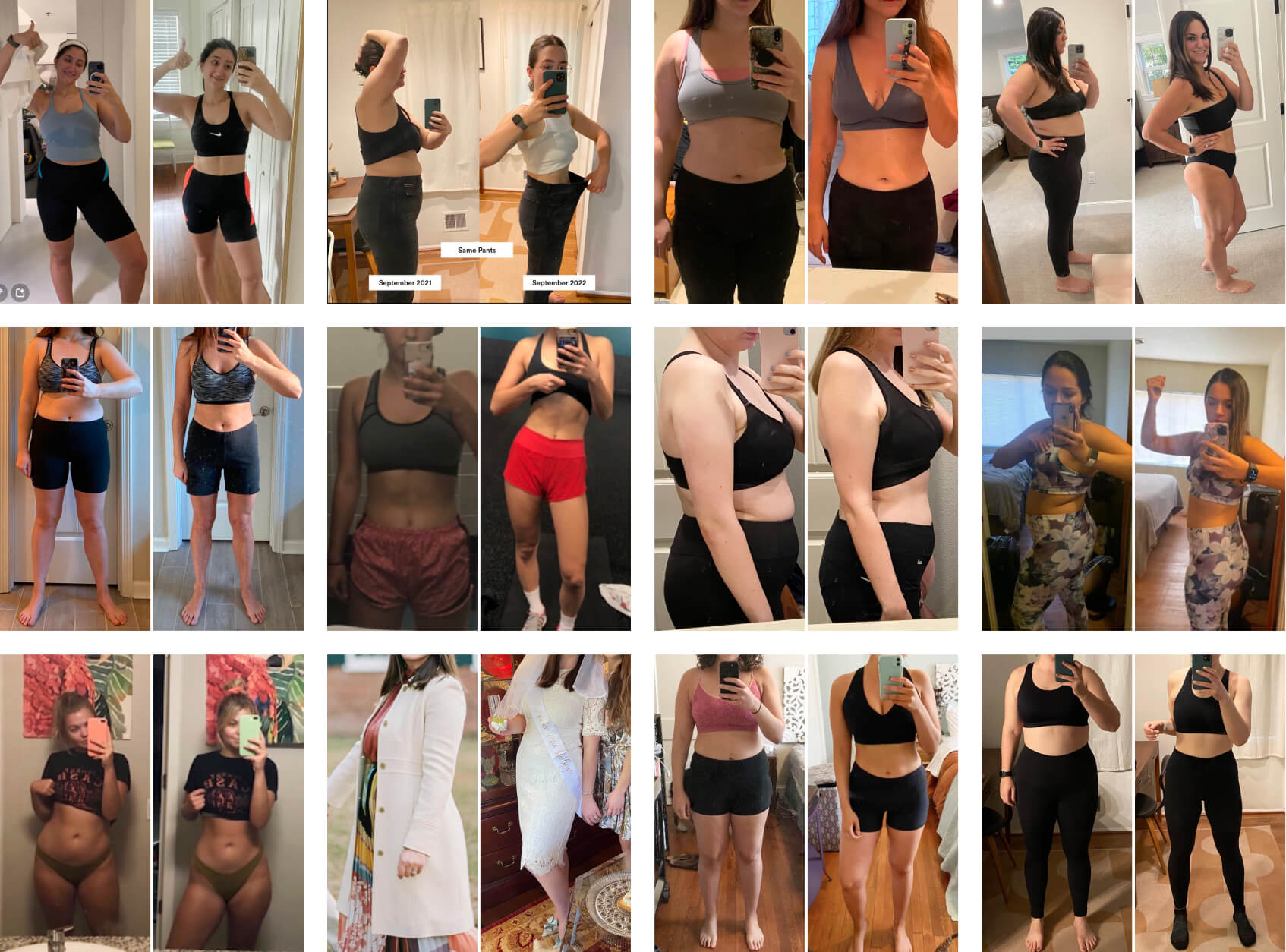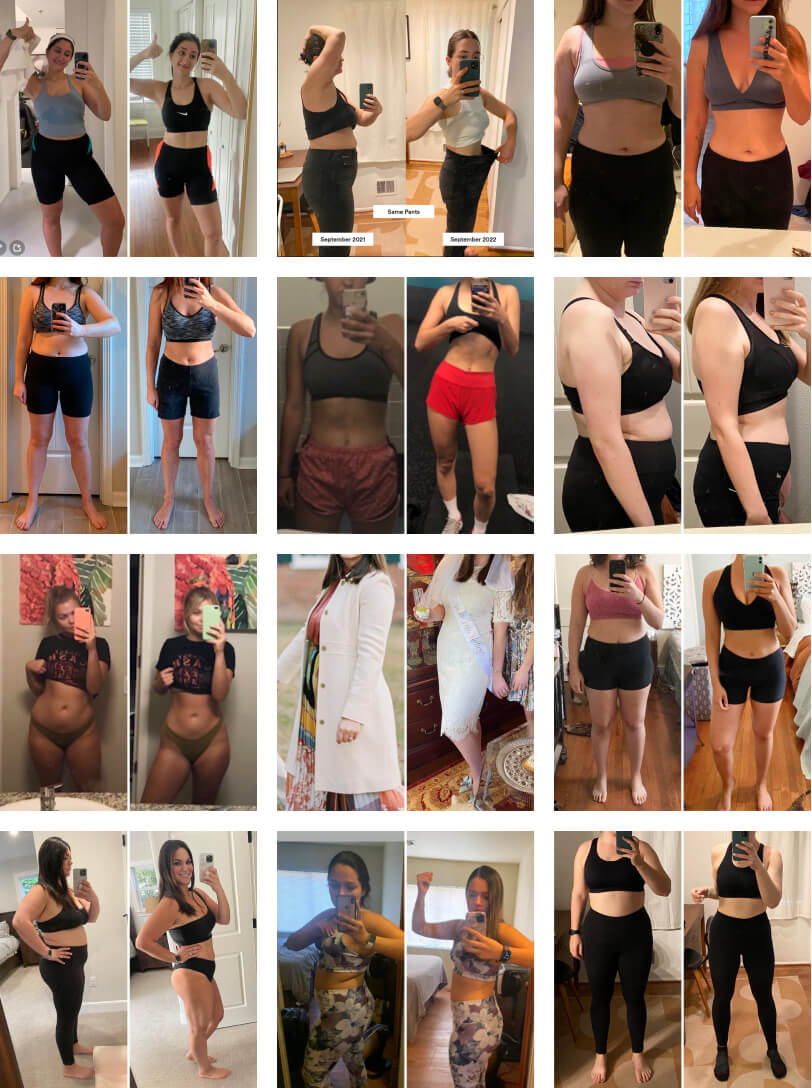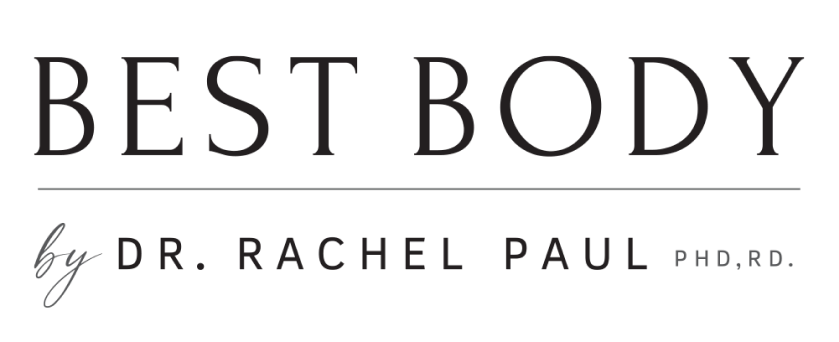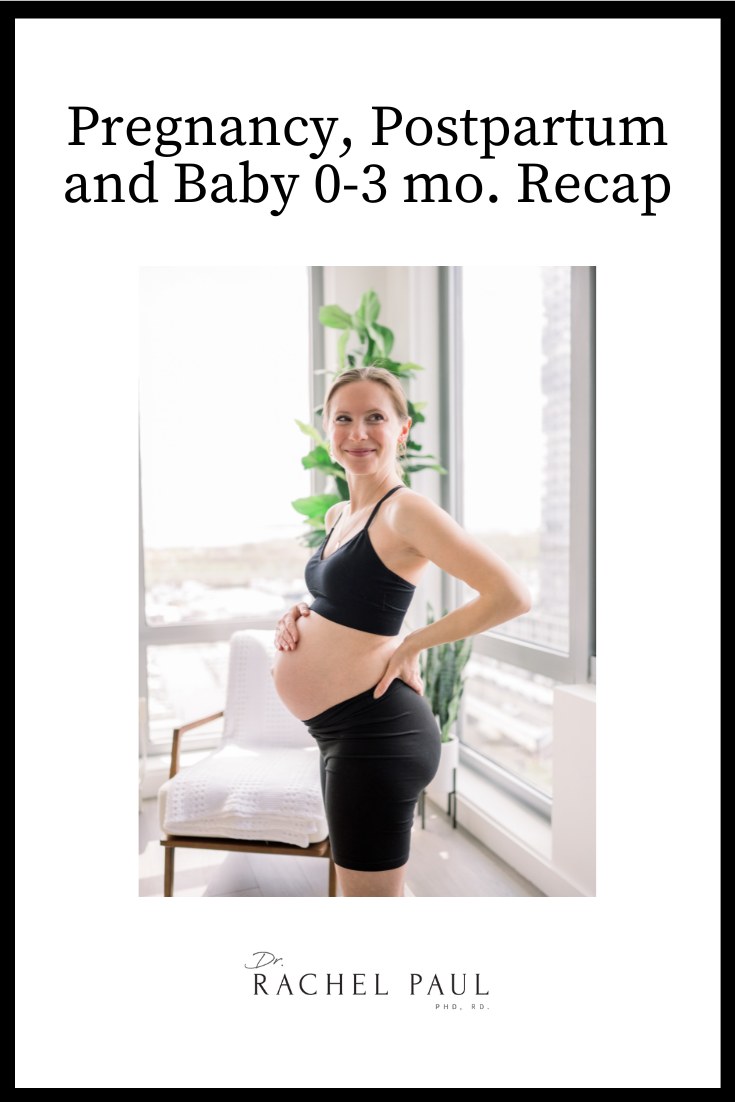
IMPORTANT DISCLAIMER: This blog post is not medical advice, it’s what I personally did during my pregnancy and postpartum journey, and with Zoe & Ariel. Always talk to your doctor before making any health related changes, or decisions with your baby.
I wanted to make a list of everything pregnancy and postpartum related so that I would remember for the next baby… AND I’ve received so many questions about my journey so far, so here it goes! I’m updating this 19 months postpartum with my daughter Zoe, and 2 weeks postpartum with my daughter Ariel.
An important note about this whole blog post, especially related to the non-toxic living, eating organic etc. sections: humans have babies all the time without doing any of these things, and their babies are perfect! Again, these are mostly notes to myself so I can remember for the next baby 🙂 but I wanted to share them with you in case anything is helpful.
Getting Pregnant
Preparing Your Body
- Real Food for Fertility: I 100% recommend reading this book by Lily Nichols RDN – it’s kind of the prequel to Real Food for Pregnancy (which I also highly recommend!)
- The Egg: According to Jolene Brighten, your egg starts developing 90 days before it’s released – so what you do during those 90 days matters. Jolene recommends a paleo-style way of eating, and using non-toxic household and cooking products. I started switching over to non-toxic products the few months before trying to conceive with Zoe, but I certainly wasn’t perfect by a long stretch (and am still not!!).
- Prenatal: Start taking your prenatal at least 90 days before trying to conceive. I took SmartyPants gummies or FullWell, depending on whether I wanted to swallow a pill that day.
Non-Toxic Living
For many products, I use EWG’s guide to find options with the least amount of potentially harmful chemicals.
- Pans – ditch teflon non-stick and opt for stainless steel, ceramic, and cast iron instead. I use Staub, Xtrema, and OurPlace.
- Household products – we use Branch Basics, Seventh Generation dishwasher liquid, and ECOS fragrance free dish soap.
- Personal hygiene – we use Attitude laundry detergent, Honest Company shampoo & conditioner, Tom’s deodorant and flouride-free & non-whitening toothpaste, Dr. Bronner’s body soap.
- For more low-toxic lifestyle advice – here are a few recommendations: CleanKitchenNutrition, JustIngredients, RaisingWellKids, this book.
Conceiving
Zak & I were very lucky in that we got pregnant quickly with Zoe! I used these ovulation strips. Ariel was not planned, but of course we’re very excited to have her!
Pregnancy
Foods to Eat
I’m so thankful that I stumbled upon Real Food for Pregnancy during the first trimester I was pregnant with Zoe. I try to follow Lily’s advice as much as possible.
Here are foods I tried to eat (and continue to do while breastfeeding and postpartum healing) throughout my pregnancy:
- Probiotics: sauerkraut, pickles (refrigerated, made without vinegar), tzatziki, Greek yogurt, kombucha.
- Omega-3’s: baked salmon, wild caught canned salmon, sardines.
- Choline: whole eggs (including the yolk!).
- Glycine: pork rinds, chicken with the skin (e.g. rotisserie chicken), ground beef, and bacon.
- Folate: leafy greens, nuts, avocado & eggs.
- Organic: choose organic as much as possible to reduce baby’s exposure to toxins.
- Dairy products: choose 100% grass fed, organic if possible.
- Meat: choose 100% grass fed, organic if possible.
- Eggs: choose pasture raised & organic when possible.
- Supplements: I took SmartyPants gummies or FullWell pills. I also took an additional vitamin D some days.
- Iodized & Unrefined Salt: I use both of these salts at home: iodized salt; Real Salt.
- Caffeine: I switched to mostly decaf coffee before getting pregnant & glad I did! I only drink decaf now.
Meals that Worked for Me
- “Big Mac Salad” with spinach, ground beef, pickles, cheese.
- Tzatziki bowl with salmon and veggies.
- Cobb salad with eggs, salmon, bacon, and veggies.
- Salmon salad with canned wild salmon.
- Fried rice with eggs.
- Zucchini boats with melted turkey & cheese.
Acid Reflux
I had pretty terrible reflux when I was pregnant with Zoe. Some things that helped me:
- Liquids were my #1 acid reflux trigger. Eating ice cubes was the best way I found to stay hydrated. NOTE: If you’re craving ice, this could mean you have an iron deficiency – so talk to your doctor right away.
- Limit fat eaten by itself or large servings of fat on their own, e.g. nuts.
- Fructose and added sugars: My doctor recommended I limit fructose – e.g. fruit, added sugar. Surprisingly this made a huge difference for me.
- Lactose: Similar to fructose, choose dairy products that are low-lactose, e.g. hard (rather than soft) cheeses, Greek yogurt, lactose-free milk.
- Posture: not lying down or hunching over after meals, and sitting up straight while eating were both very helpful.
- Psychological vs Physical Pain: After 3-6 months of physical pain, research shows that most chronic pain is psychological (instead of actually physical / something structurally wrong in your body). This book really helped me.
Clothing
- Maternity clothing is actually nice to wear because it’s much more flattering than large, baggy t-shirts.
- H&M has a pretty nice, inexpensive maternity collection. I’ve recently purchased some nursing tops from there that I like.
- Use a belly band to not let the tummy drop too low (helpful for reducing diastasis recti). Sadly I didn’t wear mine during either pregnancy because it exacerbated my reflux.
Exercise & Physical Therapy
- Walking absolutely counts. I’ve tried to get 8000-10000 steps per day as much as possible.
- There is also a lot of core-focused exercises you can do to prevent diasstasis recti – youtube is a great resource!
With Your Partner
If you have a partner, I highly recommend going through these questions and this book.
Medication
Absolutely take medication if you need to, but it’s good to be aware that taking larger doses of acetaminophen/tylenol while pregnant has been associated with autism and adhd in children. Talk with your doctor about what’s right for you and your baby. And don’t stress if you’ve already taken it! Stressing helps no one. I took it a few times with both pregnancies.
Baby Shower
- I recommend doing your baby shower around 7 months (rather than 8 months which is what ended up working out best for my friends and family). I was very tired & it was harder to find a dress that fit!
- If you want to share photos (e.g. on Instagram) the day of your shower, I would recommend hiring a photographer and paying extra to get the photos THAT DAY or the next day! Typically you won’t get photos from a professional photographer for a few weeks.
The Birth
Preparation
You may want to be knowledgeable about what’s going on with your body & the baby – the lingo the doctors use, positions you want to be in, what medications you want/don’t want, etc.
Courses
- Take Pushing Power for a great guide on pushing out the baby. This is an affiliate link, but I 10000% recommend the course!!
- Take a general birthing class (this one looks good) – but if you hire a doula (recommended!!) they’ll likely walk you through everything you need to know.
- Here are my birth affirmations.
What to Pack
Hospital
- Long extension cord
- Electronics & chargers
- Toothbrush, toiletries
Nursing
- Anything that zips/snaps/buttons makes nursing so much easier (e.g. zip up sweatshirts, robes)
- Organic coconut oil to help heal cracked nipples (the first few days of nursing can be painful)
- Egg light for nighttime
Clothes
- Loose tops (that button/zip for nursing) and loose-waist pants are easy to wear
- Flip flops for the shower and/or walking around
Postpartum Healing & Care
- The hospital will (likely) set you up with most things you need – so you don’t need to buy a lot (adult diapers, ice packs etc.)
- Organic coconut oil & Attitude belly oil for the tummy
- Magnesium citrate supplement to help with the first poop post-birth (I prefer to take this rather than e.g. Metamucil)
SNACKS – some of my go-to’s are:
- Nuts & trail mix
- Jerky – I like the mini sticks from Archer
- Gum
- Chocolate (of course!)
- Travel cups (e.g. Yeti) if you like those
Baby
- Swaddle – I just got the newborn size @kytebaby one & am excited to try it – we love their sleep sacks
- Newborn sized onesies (often 0-3 months is too big!)
- The hospital will likely give you hat(s) and blankets – but you could also bring your own if you like
- The hospital will also give you diapers (if I remember correctly) but you can also bring your own if you prefer. I got some newborn size ones from @thrivemarket (these are supposed to be made with the good ingredients). We also love @mymilliemoon diapers
- Organic coconut oil (yes this has so many uses!) to use on baby’s bottom before the first poop (meconium), which makes the first sticky poop easy to wipe off
- Diaper cream – Earth Mama and @triple.paste
- You can opt out of giving a baby a bath until she gets home. This is what we did – to preserve the beneficial bacteria she had covering her from the birth.
Postpartum
Healing
- Many people (my physical therapist included) and cultures advise wearing a postpartum girdle to help your organs shift back to where they were pre-pregnancy immediately after birth.
- Take it easy!! Your body just did an incredible thing – any way you gave birth.
Physical Therapy
- Diastasis Recti is very common – it affects nearly 2/3 of postpartum women. I had a “significant” gap (4 cm) with Zoe and saw a physical therapist/ pelvic floor specialist to help close the gap.
- If you don’t want to or can’t see a physical therapist, there are many online programs and YouTube exercise videos to help close your gap.
Weight Loss & Breastfeeding
- #1 talk to your doctor to get clearance
- #2 before (and after!) your breast milk supply stabilizes (which typically happens between 6-12 weeks postpartum), focus on whole real foods and listening to your hunger & fullness cues.
- Make SURE you always stay hydrated.
- Make sure you’re eating very well to properly heal yourself, and supply your baby with the best milk. Lily’s book gives some guidance here.
- Some women lose their pregnancy tummies quickly, and others lose them slowly. Neither is “better”, everyone is different!
Meals for New Parents
- If you have any pregnant friends who are due soon, set up a 1-2 week “meal train” for them of family and friends who can send them gift cards or meals.
- For a few months we got a few Factor meals each week.
Gifts for New Moms
- Spoon Full of Comfort soup boxes are a huge hit – you can send a custom box for new pregnancies, new parents, etc.
- Etsy has a lot of cute new mom gifts. I love this necklace.
Feeding the Baby
Breastfeeding
- Nipples: Use organic coconut oil to heal your nipples while they become sore during the first few days – your nipples will hurt & bleed, but they will heal!
- Spit up: You want to prevent spit up when possible so that the baby gets adequate nutrition and gains weight. Try to keep baby as upright as possible during and after feedings to prevent spit up.
- Burping: put baby over your shoulder & make sure she burps at least once (preferably more than once) or else she’ll spit up.
- The “Let Down”: Especially when you have an over-supply at first, you want to get 2 Haaka’s (this is a link for 2, one for each boob), to suction onto your boobs when you’re in between feedings (and leaking) and also during feedings so you can latch it onto your non-breastfeeding-boob. You can seriously collect a lot of milk for a bottle this way!
- Tops: I mostly wear Zak’s full-zip sweatshirts while nursing. Similar to these.
Bottle Feeding
- Bottles: We use Dr. Brown’s glass bottles and the Premie nipples. Glass bottles are great because not only do you limit plastic exposure to baby, but you can wash them in the dishwasher.
- Bottle feeding position: Try to keep them upright as much as possible to prevent excess spit up.
- Mixing in the breast milk fat: The fat in breastmilk rises & sits at the top of bottles when it’s in the fridge. Swirl the bottle to re-distribute the fat (rather than shaking the bottle which breaks down some of the fat – which you don’t want).
- Drying Bottles: We use this 2-level rack for bottles.
The Pump & Bottles
- Get glass bottles instead of the plastic ones your pump will likely come with. The ones I linked fit my Medela Pump in Style.
- I tried a hands-free pump (the Elvie Stride) but I got about 1/2 the amount of milk as I did with my Medela Pump in Style, so sticking with the Medela.
- This pumping bra is great and much cheaper than others.
- We use these labels on the bottles for the first-in-first-out method. Zoe drank yesterday’s milk (or nursed from me directly). Take them off before you wash the bottles so that your pen ink doesn’t contaminate other bottle parts.
- Pump parts: If you exclusively pump or pump 3 or more times per day, it’s recommended to get new pump parts every month. If you pump fewer than 3x per day, get new parts every 2 months.
- Frequency of Pumping: I pumped every 4 hours during the day, unless I’m nursing.
Freezing Milk
- Fresh breast milk lasts 3-4 days in the fridge (you can smell it & taste it to see if it’s gone bad). We freeze our milk at the end of day 2 if it hasn’t been used. Frozen milk lasts a few months. Here is the CDC’s guide.
- You can freeze milk in plastic bags or glass containers. Lie plastic bags flat to freeze so that they stack easily. If you’re going the plastic bag route: use these large ziplock plastic bags to store your milk – they have the flat bottom which makes stacking your milk bags easy. I typically get ~50 oz of milk in one of these ziplock bags.
- I finally figured out a good system for freezing milk in glass wahoo (to limit plastic exposure to baby)! I use these glass jars, these caps (the regular ball jar caps rust super easily), and what’s fantastic is that the glass jars can become bottles themselves! Use these rings and these nipples after you’ve defrosted your milk. NOTE! Leave some room at the top of the jar since liquid expands when it freezes. Also don’t run frozen glass under hot water or it will shatter.
- I purchased this additional mini freezer (I also use this) for my milk. It holds about 400 oz of frozen milk in plastic bags.
- You can use Human Milk 4 Human Babies Facebook groups to find milk donations if you don’t have enough, or donate your extra milk.
Maintaining Breastmilk Supply
- HYDRATE! Try to drink filtered water, and at least 100 oz/day – preferably much more. It’s helpful, for me, to turn on the heat or drink water in the warm shower to make drinking water easier during the winter months.
- Foods: Real Food for Pregnancy also outlines some foods to focus on during postpartum/nursing (no surprise, proteins are incredibly important!). I pretty much try to eat the same foods as I ate when I was pregnant.
Increasing Supply
If you ever need to increase supply:
- Pump more frequently – this can be more times during the day (e.g. instead of every 4 hours do every 2), and/or can be after your nurse your baby. So nurse her, and then pump right afterwards.
- Do “power pumping”. Here’s an article on what that means.
- Don’t stress out about any one pumping session producing less milk than you’re used to. Stressing only worsens the problem, and your supply will likely be where it usually is next time.
Mastitis
I got this twice so far. Here’s what I did that solved my mastitis without antibiotics (always see a doctor to determine if antibiotics are right for you).
- Heat & Massage (in the shower or with a warm compress): use the massage techniques in this Your Two Jugs course, use an electric toothbrush as a massage instrument, attach Haakas to your boobs filled with warm water and epsom salts, use a warm damp diaper as a compress.
- Extract the Milk (nursing or pumping): Do “dangle” feeding or pumping to have gravity help you (google it). If you’re nursing, suck on the affected side first so your baby sucks harder.
- Cool: Mastitis is often inflammation – so you want to COOL down the boob after extraction. Use a refrigerated jade roller, put small ice packs in your bra.
0-3 Months
Schedules
- Follow Mom’s on Call schedules (at the end of their book).
- For the first 1-2 months, babies are mostly sleeping – eating, sleeping, and pooping/peeing.
- Track what your baby is doing with the Huckleberry app. Have all your family members login with the same login. You can also download the app on your tablet, computer, etc. for easy logging. We log sleep, poop, feedings (breastfeeding and bottle) and pumping.
Awake Time Activities
- We use the Lovevery mat and toy subscription every day. Freddie the Firefly and friends are great clip-on’s for the Lovevery mat, too. Zoe likes sitting in the bouncer and looking at Freddie.
- Walks (see Out & About below)
- Jamming to music in the bouncer
- Reading books
Sleep
- Feeding during the night: Our doctor advised us: wake baby up to feed every 3 hours until they get back to their birthweight. After that, you can let them sleep for as long as they want. If there’s a weight gain or height issue, don’t let them go more than 3 hours during the day and 6 hours at night, without a feed.
- Sleeping through the night: Zoe started sleeping through the night at 2 months – and I absolutely credit Bringing Up Bebe for teaching us how to let Zoe connect her own sleep cycles (by implementing “the pause”, i.e. NOT picking them up when they cry out – seeing if they’ll put themselves back to sleep on their own). However she stopped sleeping through the night at 4 months so I don’t have any advice there haha.
- Bald spot: Since babies now have to sleep on their backs instead of their tummies (Back to Sleep campaign), many get a bald spot on the back of their heads. Use a silk sheet (in the bassinet too) to prevent or minimize the bald spot.
- Bassinet: Use a regular (non-Snoo/non-moving) bassinet so that baby learns how to put herself to sleep.
- Crib: We transitioned Zoe into a crib at 4 months. We got this GreenGuard certified one with this mattress and sheets.
- Temperature: The temperature of the room should be 68-72 degrees F. If you don’t already have heat/cooling in your house, use this thermometer in your rooms (we have one in every room).
- Monitor: Use a non-wifi/ non-bluetooth monitor so as to not expose baby to too much wifi. We have this one. Also, don’t have baby sleep less than 20 feet from the wifi router. Here’s a guide for more info.
- Nightlight: I like to be able to see her and see her chest moving to know she’s breathing, we use this light bulb in a lamp on the floor, and the same lightbulb in the room where her changing table is.
- Diapers at night: Unless she has poop or a full wet diaper, you can let baby sleep/ don’t wake baby to change.
- Humidifier: During the winter our house gets DRY. We use this humidifier. You have to clean it or else it gets moldy. These are the brushes we use.
- White Noise Machine: We keep this travel noise machine plugged in and on 24/7 in the bedroom so it’s on for naps too. You don’t want the noise to be above 60 decibels so it’s safe for baby’s ears, use the free version of this app to check the decibels near baby’s head.
Clothing for Sleep
- Follow this guide. Sleep sacks and swaddles will have a “TOG” level, starting with 0.5 (the least warm).
- Swaddle: Use a swaddle (instead of the sleep sack) before they can roll over from back-to-tummy (around 4-6 months of age). Keep them in the swaddle or else they’ll keep waking themselves up with their startle-reflex.
Diapers
- Cream: There’s 2 types of diaper cream – zinc oxide and a more gel-type one. The gel-type is for regular diapers. If baby’s bottom is looking more red, use the zinc oxide. We use brands Triple Paste (zinc oxide) and Earth Mama.
- Wipes: Water Wipes are fine. Don’t get a wipes warmer which can grow bacteria.
- Changing Table: Get a changing table that’s GreenGuard certified. We have this one, and this changing pad.
- Diapers: We get Millie Moon diapers from Target and Thrive Market diapers which are supposed to be non-toxic.
Baths
- Follow this guide. Put a wet (with the warm bath water) wash cloth over their tummies to keep them warm. We use the baby bjorn bouncer as our “docking station”.
- Frequency: We don’t do a bath every day. Especially since they’re not interacting with others or really getting dirty. Too many baths can dry their skin out.
- Temp: The temperature should be about 100 degrees – use this duck to get the correct temp.
- Soaps etc: We use the non-toxic brand Attitude. However, many times I just do a water bath with no soap (to not dry the baby out).
- Lotions: Add a non-toxic lotion after the bath (we use Attitude and Babo brands) before you dry them off to lock in the moisture. Pat them dry (rather than rubbing) again to keep in the moisture.
- Keeping them warm: Babies can’t regulate their own temperatures yet, so it’s important to keep them warm during, and getting out of the bath. If possible, put the heat on, close the door if the other room are cooler, put a hat on them when they get out, etc.
- Tub: We use this in the tub – fill up the tub with water & place baby in it.
Clothing
- Long sleeve PJs/Playsuits: These are my favorite. They’re organic cotton, not too tight, use zips, a tab over the zip (so that it doesn’t poke Zoe in the throat), and a collar. These are another brand that I like.
- Short sleeve onesies: Honest company also makes an organic short sleeve onesie.
- Detergent: We use the non-toxic brand Attitude for all of our clothes (not just baby). We don’t use a specific baby detergent.
Dry Skin
- Eczema: Our apartment gets very dry during the winter months. If we don’t use a humidifier, I wake up with a bloody nose and Zoe can get some dry skin/eczema on her neck and arms and chapped lips. I tried more non-toxic lotions on her eczema, but Aveeno just works the best (there’s a reason it has such good reviews!).
- Cradle Cap: “Cradle cap” is dry skin on baby’s head. It’s not a “problem”, it’s just not the nicest to look at. Some coconut oil does well, but you can also use this highly rated Frida device (be gentle!!).
Flat Head Syndrome
- Because of the “back to sleep” campaign, Flat Head syndrome is very common – it affects about half of babies.
- Wear your baby in a carrier (we love the Boppy), do tummy time every day, move your baby’s head to a different side when they’re sleeping if they prefer a particular side.
Out & About
- Stroller: We have the UppaBaby vista stroller, carseat, snugseat (a must! here’s how to install it since the directions are SUPER unclear), cozyganoosh, and this organizer.
- Carriers: We tried a few, and love the Boppy. Here’s a video on how to use it. Babies should face inwards (their tummy to your tummy) until they’re 6 months or older (this will depend on the carrier). When they’re 0-2 months, they should go in carrier with “froggy legs” – meaning, the soles of their feet are touching vs. hanging out of the carrier. Ask your doctor to show you this.
- Cold Weather Hats: I love these and these (with a “scarf”!).
- Diaper Bag: We have this diaper bag and this changing pad. Keep trash bags in your changing pad for dirty diapers.
- Coat: Get this coat for winter so that you can wear your baby in your carrier and wrap & zip the coat around them so they don’t get cold.
Hiring a Nanny
We’ve absolutely loved both of our nannies (when we were in Jersey City and now in Norwalk)! Here’s what we did to find her:
- We used local Facebook groups, word of mouth (e.g. other moms), Care.com and SitterCity to find candidates
- First, make sure some basic logistics are understood via email or text (before you get on the phone/ FaceTime) – whether you’re looking for full time/ part time, whether having a pet around is ok by your nanny, what their rate is, etc. to save everyone time.
- Second, schedule a FaceTime or WhatsApp video interview
- Third, invite them over for a “trial” to take care of your baby for a few hours
Some things to ask/keep in mind:
- Are you looking for help with household tasks (apart from baby) e.g. dishes, laundry? Not all nannies will do non-baby-related chores.
- If you and/or baby is sick – will the nanny still come?
- Is your nanny flexible – e.g. can she come early, stay late, do date nights/ weekends, travel with you?
- Does your nanny have a recent CPR certification?
- Does your nanny have experience cooking/preparing foods for babies?
- Is your nanny knowledgeable of how to encourage baby meets milestones on time?
